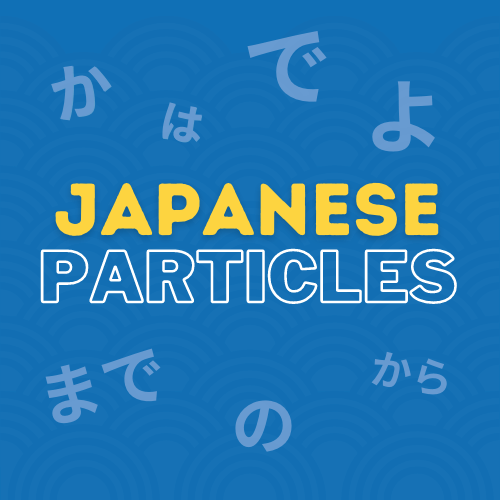Japanese Grammar Bank | How to Use Adjectives in Japanese
In this article we discuss how to use adjectives in Japanese? It’s an important one so get the page bookmarked and use it for your revision!
Do you realise the difference between a picture and a beautiful picture?
It feels different, right? Well, that’s the power of adjectives! Today, we are going to teach you how to use this power in Japanese!
Adjectives are words used to describe things. Using adjectives in a conversation will definitely make you sound more natural.
These adjectives will contribute to increase your Japanese language fluency.
In Japanese, there are two types of adjectives:

い形容詞 (ii-keiyoushi) and な形容詞 (na-keiyoushi)
Basically, these are the adjectives that either end with ii or na.
In this post, we are going to introduce you to many adjectives and how to use them.
Japanese Adjectives | The ii Adjectives
Japanese Adjectives | The na Adjectives
Japanese Adjectives | Exceptions
Japanese Adjectives | Foreign Adjectives
Japanese Adjectives | FAQs
How to use Adjectives in Japanese? | い形容詞 – ii adjectives
ii adjectives – Structure #1
It’s very easy to learn to use ii adjectives as it is very similar to the English way. You just have to attach the adjective before a noun.
Adjective + Noun + です.
For example:
| Example | Hiragana | Romanisation | English |
|---|---|---|---|
| 古い本です。 | ふるいほんです。 | Furui hon desu. | It is an old book. |
Here, the adjective describes the noun perfectly and emphasises the feature of the book i.e., the book being old.
ii adjectives – Structure #2
Another sentence structure is to attach the adjective at the end of the sentence, before desu. You will understand the difference by looking at the example.
Noun + は + adjective + です.
For example:
| Example | Hiragana | Romanisation | English |
|---|---|---|---|
| 本は古いです。 | ほんはふるいです。 | Hon wa furui desu. | The book is old. |
Here, the topic marker particle は is used to stress the word ‘book’ giving more emphasis on book rather than it being old.
To help you remember, here are a few adjectives with their antonyms:
| Hiragana | Romanisation | English | Hiragana | Romanisation | English |
|---|---|---|---|---|---|
| おおきい | ookiii | Big | ちいさい | chiisai | Small |
| たかい | takai | Expensive | やすい | yasui | Cheap |
| ながい | nagai | Long | みじかい | mijikai | Short |
| あつい | atsui | Hot | つめたい | tsumetai | Cold |
| あたらしい | atarashii | New | ふるい | furui | Old |
How to use Adjectives in Japanese? | な形容詞 – na adjectives
na adjectives – Structure #1
When you are attaching the word before a noun, you retain na at the end of then na adjective. Just like ii adjectives.
Adjective + Noun + です.
For example:
| Example | Hiragana | Romanisation | English |
|---|---|---|---|
| 簡単な質問です。 | かんたんなしつもんです。 | Kantan na shitsumon desu. | It’s an easy question. |
na adjectives – Structure #2
When you want to use the na adjective at the end of a sentence, you will have to keep in mind that you need to lose the na ending of the na adjective.
Noun + は + adjective (remove な) + です.
For example:
| Example | Hiragana | Romanisation | English |
|---|---|---|---|
| 質問は簡単です。 | しつもんはかんたんです。 | Shitsumon wa kantan desu. | The question is easy. |
Here is a list of some na adjectives:
| Hiragana | Romanisation | English | Hiragana | Romanisation | English |
|---|---|---|---|---|---|
| にぎやかな | nigiyakana | Lively | じょうぶな | jyoubuna | Sturdy |
| たいへん | taihen | Very | いろいろな | iroirona | Various |
| すきな | sukina | Likeable | しんせつな | shinsetsuna | Kind |
| ひつような | hitsuyouna | Important | べんりな | benrina | Convenient |
| じょうずな | jyouzuna | Skilled | へたな | hetana | Unskilled |
How to use Adjectives in Japanese? | Exceptions
There are a few adjectives that you need to be cautious about.
These adjectives end with ii BUT they are na adjectives.
A bit confusing, right?
To remember these exceptions, you have to memorise them or practice sentences using these adjectives.
As they are na adjectives, the formation of sentences using these particles is similar to na adjectives.
| Structure #1 | Structure #2 |
|---|---|
| きれいな花です。 | 花はきれいです。 |
| Kireina hana desu. | Hana wa kirei desu. |
| It’s a beautiful flower. | The flower is beautiful. |
Here’s some of these adjectives to be aware of:
| Hiragana | Romanisation | English |
|---|---|---|
| きれいな | kireina | Beautiful / Clean |
| ゆうめいな | yuumeina | Famous |
| ていねいな | teineina | Polite |
| しつれいな | shitsureina | Impolite |
| きらいな | kiraina | Dislike |
How to use Adjectives in Japanese? | Foreign Adjectives
The Japanese language has included some foreign words into its vocabulary as adjectives. These foreign words, as we learned while learning the alphabets, are written in Katakana.
These foreign adjectives are considered na adjectives.
Few examples are:
| ハンサムな | ユニークな | ドライ |
| hansamuna | yuniikuna | dorai |
| Handsome | Unique | dry |

Are you a Flexi Classes student already?
Learn more about Adjectives in Japanese in the following Flexi lessons:
Adjectives (A1, Chapter 2)
Misa’s Book (A1, Chapter 2)
Because It Is Old (A1, Chapter 3)
Not a Flexi Student yet?
This was an introduction on how to use adjectives in Japanese. Of course we can go a lot deeper but this is a good start for your Japanese adjectives adventure!
You’ll certainly encounter many adjectives along your learning journey, so make sure to come back to this lesson any time you have a doubt on the structures and their usages.
Here are a few more important lessons to nail down:
If you’d ever fancy some Japanese classes, don’t forget about our Flexi Classes!
FREQUENTLY ASKED QUESTIONS
What are the two types of Japanese adjectives?
There are two types of Japanese adjectives:
い形容詞 (ii-keiyoushi) and な形容詞 (na-keiyoushi)
i.e., i-adjectives and na-adjectives
Basically, these are the adjectives that either end with ii or na.
How to use adjectives in Japanese?
The Japanese ii adjectives can be used with 2 structures:
Adjective + Noun + です.
Noun + は + adjective + です.
The na adjectives can also be used with 2 structures:
Adjective + Noun + です.
Noun + は + adjective (remove な) + です.
Check out our lesson for sentence examples.
What are some examples of Japanese na-adjectives?
Some examples of na-adjectives in Japanese are:
にぎやかな nigiyakana | Lively
すきな sukina | Likeable
しんせつな shinsetsuna | Kind
じょうずな jyouzuna | Skilled
へたな hetana | Unskilled
What are some examples of Japanese ii-adjectives?
Some examples of ii-adjectives in Japanese are:
おおきい ookiii | Big
ちいさい chiisai | Small
あつい atsui | Hot
つめたい tsumetai | Cold
あたらしい atarashii | New
やすい yasui | Cheap
Where to learn more about Japanese particles?
Japanese particles are an essential aspect of the language, and you should learn the basic ones early in your studies.
You can start with 15 Japanese particles in our article.
Do you have more Japanese lessons like this one?
Absolutely, we do.
You can check more of this kind of Japanese lessons in our Grammar Bank.









